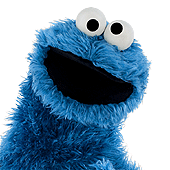This is a really neat topic. Every set is different, but generally puppeteers usually have to work together with camera people to ensure that their arms stay out of shot. When this happens, it can be for a variety of reasons (often it is not really the puppeteer's fault).
If the height of the puppet is changing through out the shot (rising or sinking) then it is probably the fault of the puppeteer. If the puppet is at a consistant height and the puppeteer's arm is visible throughout the shot it is probably the fault of the camera operator since they are ultimately responsible for framing a shot. Good directors also know to watch out for this during onset playback.
One problem I've encountered with this myself is that often times the framing you see on a monitor in the studio will not exactly match up with the framing that a viewer will see if your monitor is not set-up properly. It actually takes quite a bit of technical know-how to avoid this sort of problem. Also, during multi-camera TV shoots a puppeteer is not always able to see every camera angle being recorded in their monitor.
Another problem that occurs frequently is that because film and TV (especially TV) is done on a very tight schedule, sometimes a decision will be made to "move on" if the day is behind schedule and the director has an otherwise perfect take where the performer's arm is slightly visible.
Sometimes people just really mess up too. I heard about one show where they filmed an entire scene with the puppeteer's
entire body in the shot! No one - not the puppeteers, director or crew - noticed until the episode was being edited together.
I don't think it is really fair for us to pick on Steve about this. I have noticed it too, but I've also seen Jim do it countless times as well. It's much, much harder than it looks to pull of absolute perfection in puppetry.
That said, there's still really no excuse....


 Welcome to the Muppet Central Forum!
Welcome to the Muppet Central Forum! Sesame Street debuts on Netflix
Sesame Street debuts on Netflix Jim Henson Idea Man
Jim Henson Idea Man Back to the Rock Season 2
Back to the Rock Season 2 Bear arrives on Disney+
Bear arrives on Disney+ Sam and Friends Book
Sam and Friends Book


